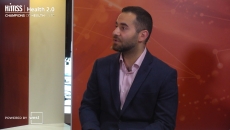Health Information Exchange (HIE)
Audacious Inquiry President Scott Afzal says his company created an encounter notification service for physicians that has become the starting point for using triggered events for a health information exchange.
Among Holston Medical Group’s many accomplishments with the help of the HIE: Increased pay-for-value payments by 44%, with more than $13 million in value-based revenue annually; increased fee-for-service payments by 7%; and reduced employee-to-provider ratio by 0.7 FTEs.
Use of Direct messaging increased by more than 50 percent over the previous quarter and nearly 400 percent since last year.
The tech giants have made progress on the pledge they made one year ago, and plan to do more, they said at the CMS Blue Button 2.0 Developer Conference.
The goal of the Trusted Instant Messaging+ standard is to enable secure real-time electronic transmission of healthcare information.
Transparency with fair data usage is being explored in Finland, while the country's general outlook is that data should be shared and used to improve services where possible, says Jaana Sinipuro, project director at Sitra.
The Office of the National Coordinator for Health IT says it's seeking public input and recommendations before it takes a "snapshot" of its Interoperability Standards Advisory toward the end of the year.
State and regional HIEs have the deep experience necessary to improve interoperability – which is about more than just moving patient data from one point to another, says John Kansky, president and CEO of the Indiana Health Information Exchange.
However, blockchain technology is still in its infancy, so expectations should be managed accordingly, says Dr. Abdullah Albeyatti, CEO and co-founder at Medicalchain.
Three interoperability experts – from Boston Children’s Hospital, Holon Solutions and Payformance Solutions – discuss the most important tactics to employ when first working with interoperability technologies and standards.



